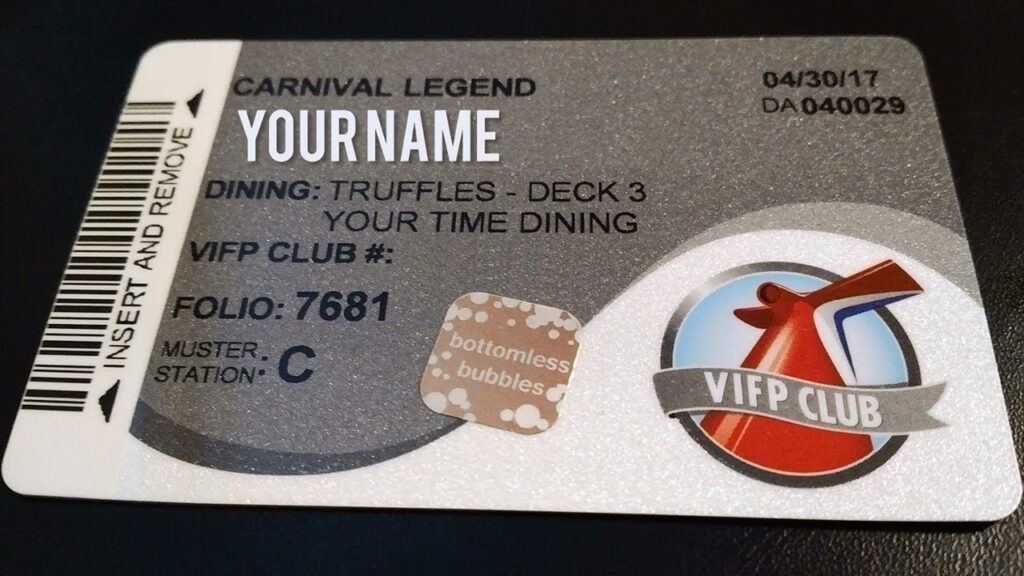Overview
One of the biggest questions that first time cruisers have is how spending money onboard a cruise ship works. For anyone using a debit or credit card, the payment information is provided during online check-in, and the final balance is settled a day or two after the end of the cruise. For anyone using other payment methods, more effort is necessary to add the funds to the onboard spending account.
Sail & sign account
Every guest who will sail on a Carnival ship will either own their own account, or they will be on someone else’s Sail & Sign account. This is Carnival’s cashless onboard credit program, which allows guests to charge onboard purchases and gratuities directly to a personal account for convenience. Prior to the cruise or on embarkation day, money is added to the account. During the cruise, each guest can check how much money has been spent as well as the remaining balance. When using a debit or credit card to fund the account, the remaining balance is automatically replenished as it gets depleated. At the end of the cruise, guests can cash out any excess funds, although it is usually not necessary to do this in most cases.

Funding Sail & Sign accountS
Approximately two weeks prior to a cruise, guests will need to check in on Carnival’s website. During the online check in process, guests will provide their contact information, citizenship and travel document information, travel plans, and selection of an arrival window. They will also indicate how many Sail and Sign accounts are needed, including who is has charging privileges on each one.
For each Sail & Sign account, guests will indicate whether a credit or debit card will be used, or if it is a cash account. When selecting a credit or debit card, guests will need to enter their card information online as part of the check in process. If selecting a cash account, then the account is funded later. With either choice, the guest always has the option to load cash or up to $2,000 of Carnival gift cards onto the account.
It isn’t widely advertised, but Carnival offers a Cruise Cash product that lets the guest, or a friend or family member fund the Sail & Sign account prior to the beginning of the cruise. A maximum of $500 can be added per room via Cruise Cash, and it can be purchased from the Fun Shops area on Carnival’s website. Cruise Cash is non-refundable. See the Cruise Cash section for more information.
On the morning of the cruise, if a cash account was selected, then cash or Carnival gift cards will need to be added to the account. This can be done at the terminal during in-person check-in. Once onboard the ship, funds can be added to the account by using a Sail & Sign kiosk (pictured on the right) or by visiting Guest Services.

Travel Agent’s Personal Preference
I like to set up my Sail & Sign account with a credit card, since I tend to have a lot of unused credit, and having a hold placed on my card is not an issue for me. In general, I never recommend that people use debit cards for any purpose other than withdrawing or depositing cash at an ATM. I also buy a Carnival gift card prior to each cruise and take it to a Sail & Sign kiosk to fund my account.
Managing Sail & Sign accounts
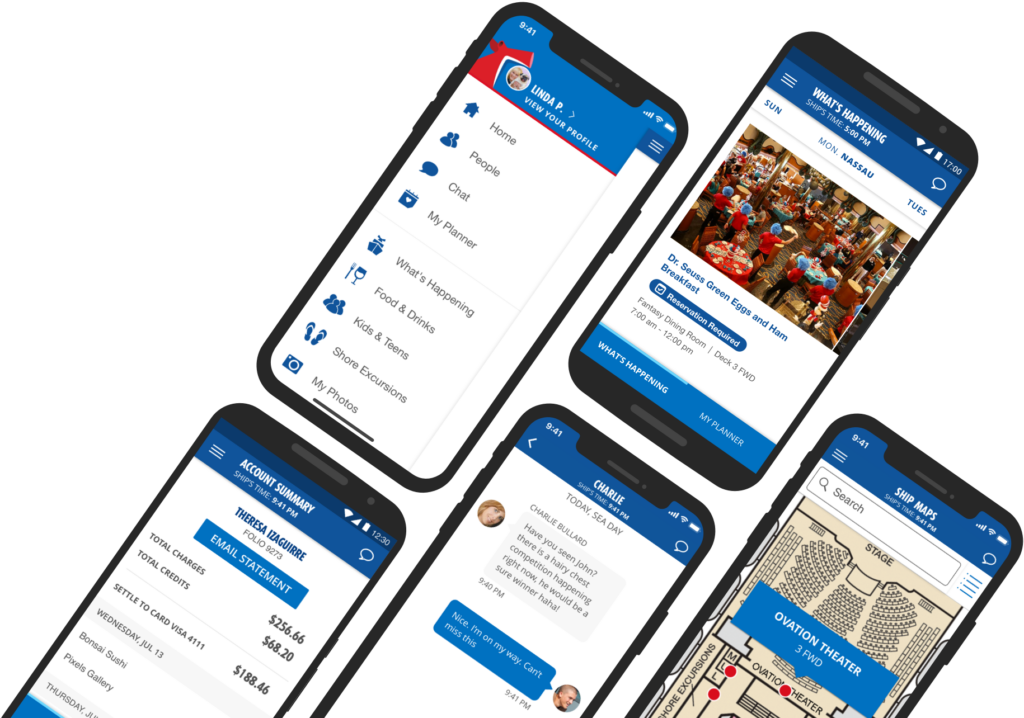
There are four main ways to track spending while onboard the ship.
Carnival HUB App – Pictured on the left is Carnival’s HUB App. This should be installed on every guest’s phone prior to the beginning of the cruise. The app provides a lot of functionality, such as providing access to the daily entertainment and meal schedules, ship deck plans, checking in for dining, and reviewing Sail & Sign Account balances and purchase history.
Television – Each room on a cruise ship has a television. By using the TV’s remote control and entering a folio number, each guest can check their account balance.
Sail & Sign Kiosk – Not only can kiosks be used to load money onto accounts, they can also be used to check spending and remaining balances. A printout can also be requested.
Guest Services – Visiting Guest Services usually involves standing in line, but this is another way to check Sail & Sign account balances.
Cashing out Sail & Sign Accounts
At the end of the cruise, guests might wonder if it is necessary to cash out any unspent funds. The short answer is maybe, but it is probably not necessary in most cases. Visiting the casino is an option for some people with a lot of non-refundable onboard credit to cash out. To do this, guests load cash from the Sail & Sign account onto a slot machine, and then it is cashed out while in the casino. This technique might work with smaller amounts of money, but there is no guarantee.
Onboard credit consists of both refundable and non-refundable portions. Non-refundable credits are always spent before the refundable credits. At the end of the cruise, unspent non-refundable credits are lost.
| Refundable Onboard Credit Type | Definition | Refund Method |
|---|---|---|
| Debit/Credit Card Holds | Onboard credit available to spend as a result of a hold placed on a debit or credit card. | The hold on these excess funds is released from the card after the cruise. |
| Carnival Gift Cards | Onboard credit added by applying up to $2,000 of Carnival gift card to the account. | A gift card is sent to the address on file via FedEx with credit for any unspent gift card funds. |
| Excess Port Tax Refunds | Onboard credit added to the account as the result of Carnival refunding excess port taxes paid. | A check for the balance is mailed to the address on file. |
| Cash | Cash loaded onto the Sail & Sign account. | A check for the balance is mailed to the address on file. |
| Non-Refundable Onboard Credit Type | Definition |
|---|---|
| Booking Deal | Carnival runs various booking promotions. Some of them, especially Early Saver, offer onboard credit. Usually onboard credit from a booking deal can be spent prior to the cruise on Carnival’s website towards excursions, drink packages, and WiFi. |
| Cruise Cash | Cruise Cash is usually purchased prior to the cruise and is available for spending once on the ship. Up to $500 may be credited towards a room for general purpose spending, another $500 for Cruise Bar Cash, and another $500 for Cruise Photo Cash. |
| Cancellations / Future Cruise Credit | When a cruise is cancelled by Carnival and is later rebooked, in addition to any future cruise credit discounts, guests might also receive some additional onboard credit. |
| Price Drop | If booking an Early Saver rate, it offers price drop protection. If the price drops after the cruise is paid in full, then the difference is provided in the form of an onboard credit. |
| Compensation | If something goes wrong on a cruise, guests might receive some onboard credit as an apology. |
| Casino Promotion | When booking a casino promotion, it often comes with onboard credit in the amount of $50, $100, $200, $500 or even more! This onboard credit can be spent prior to the cruise on Carnival’s website. |
| Canadian Residents | For Canadian residents, sometimes the Canadian Resident Rate offers the best value along with a $50 onboard credit. |
| Military Deal | When booking a cruise, sometimes the military rate turns out to be the best deal for US and Canadian Armed Forces. It may offer a $50 onboard credit. |
| Shareholder Credit | For anyone who owns 100 shares of Carnival stock in their name, they are usually entitled to receive shareholder onboard credit. Only one person per room can claim this credit, and it cannot be used in conjunction with heavily discounted cruises, usually as a result of a casino promotion. The shareholder credit is $50 for cruises under 7 days, $100 for cruises between 7 and 13 days, and $250 for longer cruises. Use the StockPerks app to apply for the credit. |
| Group Amenity Onboard Credit | A Carnival group can be as little as 5 rooms sailing together on the same cruise. When forming a group, the rates are usually comparable to the lowest currently available rates to the public. In addition, group rates often offer amenities, such as $25 – $100 extra onboard credit. Group booking require some additional work to organize, and it is best to use a travel agent familiar with Carnival to manage your group for a more personable experience. |
Setting UP Sail & Sign AccountS
Sail & Sign Accounts are set up online using Carnival’s website during the check in process, which begins approximately two weeks before the cruise. There are various decisions that need to be made, and it would drastically slow the embarkation of the ship if everyone decided to wait until they arrived at the cruise ship terminal to do this.
Factors to consider
- Who will have their own account versus who will share accounts?
- If sharing an account, who will be the designated owner and who will be secondary?
- Will secondary people on an account have charging privileges?
- When a minor is added to an account, will they have a spending limit?
- Will the account be funded by a debit/credit card or cash?
- If it is a cash account, will the guest be using Cruise Cash, a Carnival gift card, or actual cash?
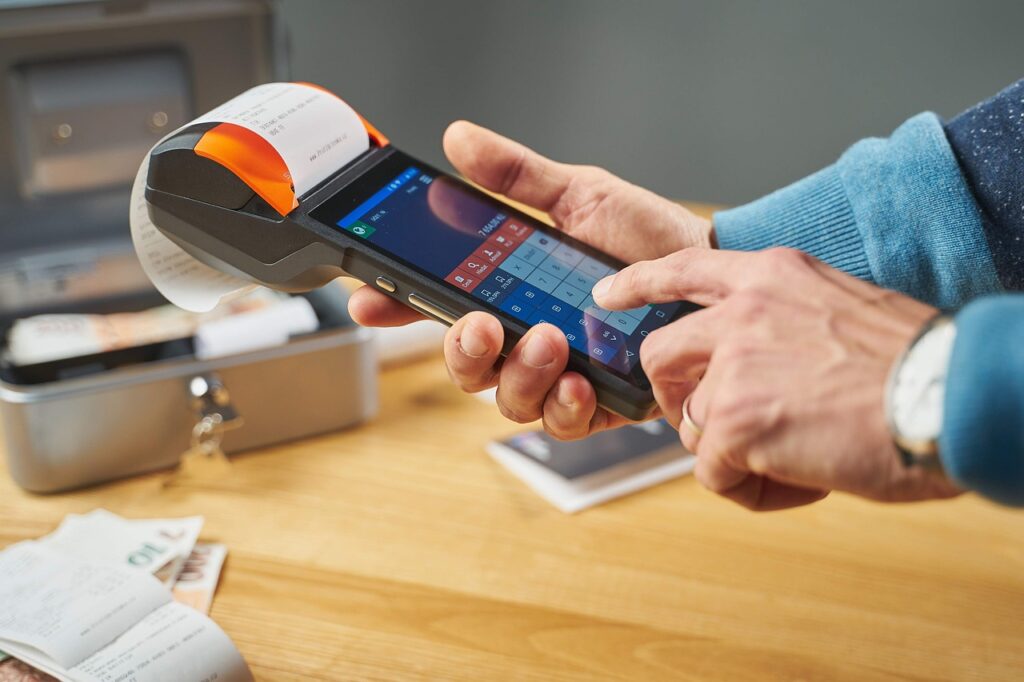
Most Common Scenarios
During my many years of cruising, I have seen two very common scenarios. Often, when a group of adults cruises together, everyone establishes their own Sail & Sign account during online check in and adds their own credit card.
I have also seen married couples establish one Sail & Sign account using a credit card with their spouse added as a secondary with charging privileges.
There are also situations where the primary guest has a large promotional onboard credit and they are sharing a room with a friend. They want to use all of the promotional onboard credit for themself. Normally, once onboard the cruise ship, all remaining promotional onboard credit is split evenly between the first two people in a room. The easiest solution is for the primary traveler to spend all of the onboard credit prior to the cruise. For example, it can be spent on WiFi, excursions, the drink package, or even cruise cash that is placed into a specific person’s Sail & Sign account. If the primary guest wants to use all of the remaining unspent promotional onboard credit for themself, then visiting guest services to re-allocate the remaining onboard credit will be necessary.
Solo TravelerS
When a guest goes on a cruise by themself, they will set up one Sail & Sign account. All of the promised onboard credit for the first two people in a room will be applied to this single account. In other words, there is no onboard credit penalty for traveling solo.


Traveling with Minors
Each passenger must be associated with a Sail & Sign account in order to complete the online check in process. Minors must be added as secondaries onto an adult’s account; they cannot have their own account. The adult has the option to allow minors to have charging privileges, as well as any spending limit. If minors are traveling in a different room, the bookings must be linked in order to add those minors to an account.
USING A DEBIT OR CREDIT CARD
When using a debit or credit card, there are a few things to keep in mind:
- A $100 hold is charged to a card on cruises of 2-6 days for each room it is associated with
- A $200 hold is charged to a card on cruises of 7 days or longer for each room it is associated with
- Replacing a credit card associated with an account mid-cruise does not remove existing holds until after the cruise is over
- If more money than the existing hold is spent, then an additional hold is authorized to the card
- These holds reduce the available credit on a credit card. Holds placed on a debit card reduce the funds available in a checking account.
- The charges are settled to the card on debarkation morning. The bank is responsible for releasing the holds, and this timeline is outside of Carnival’s control.
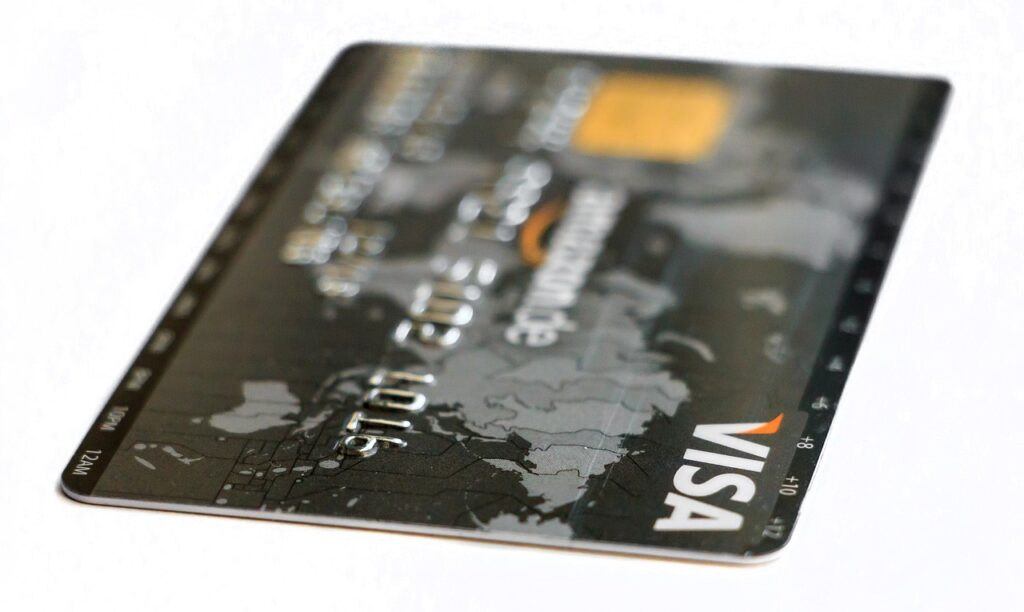
Third Party Credit Cards

When going on a cruise, it is allowable for a guest to use someone else’s credit card to fund their Sail & Sign account. An example of this is when a non-traveling parent wants to allow an adult child to use their credit card for onboard expenses.
During the online check in process, a ‘Letter of Authorization’ form is provided for guests who will be using a credit card belonging to an individual who will not be on the cruise. This form will need to be filled out, printed, and signed. During embarkation, the following three items must be presented:
- Completed ‘Letter of Authorization’
- A legible photocopy of the front and back sides of the credit card with a matching signature
- A legible photocopy of the non-sailing individual’s government issued photo ID with a matching signature.
Using Cash and Traveler’s Checks
It’s possible to deposit cash or Traveler’s Checks in USD currency at a Carnival Sail & Sign kiosk or Guest Services on the first day of the cruise. The following amounts are recommended:
- 2 – 4 day cruise: $100 per person
- 5 – 8 day cruise: $200 per person
- 9 days or longer $350 per person
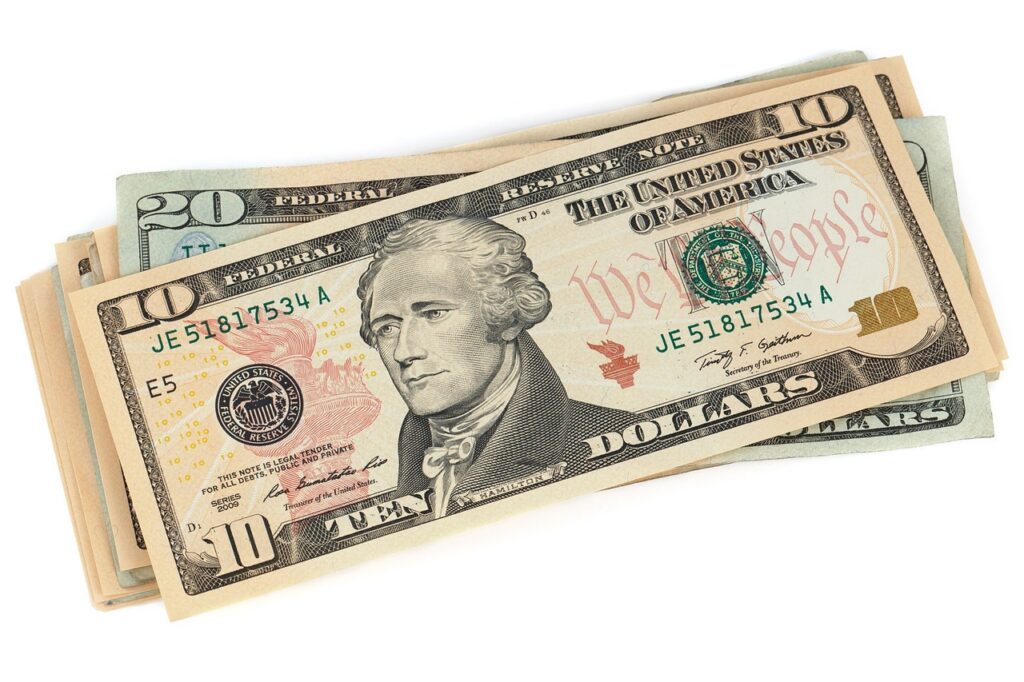
Carnival Gift Cards
Up to $2,000 worth of Carnival gift cards may be applied to a Sail and Sign account onboard the ship. Gift cards can be purchased from websites that often offer a 10% discount off of the face value. When I go on a cruise, I always add a credit card to my account during online check-in. This lets me make purchases as soon as I board. When convenient, I will add a $500 gift card to my account using an onboard kiosk. Any purchases made prior to adding a gift card will still be settled to the gift card at the end of the cruise.
Cruise Cash
Cruise cash is available for purchase in the Fun Shops section on Carnival’s website. There are three categories of Cruise Cash available for purchase, and a maximum of $500 per category can be applied towards any particular room:
- Cruise Cash – May be used towards purchases of anything on the ship, including gratuities.
- Cruise Photo Cash – May only be used towards the purchase of photos.
- Cruise Bar Cash – May only be used towards the purchase of bar items, such as sodas and alcoholic beverages.
Cruise cash can also be added to accounts linked to a credit card. The Cruise cash balance is spent first, and any overage is settled to the linked credit card.
Gratuities

Decades ago, guests would place cash into various envelopes at the end of a cruise and distribute them as tips to the crew members who helped them during the cruise.
Now, approximately 48 hours prior to the end of the cruise, each guest’s gratuities will automatically be added to their Sail & Sign account if they were not already prepaid. Gratuities are currently (as of July 2023) $16 per person per night for non-suite accommodations. Gratuities go towards the cabin steward and their assistant who provide daily cleaning service to the room, the waiters in the main dining room who serve breakfast, brunch, and dinner, as well as the staff who bus tables at the Lido Marketplace and Buffet.
These gratuities should not be confused with the 18% gratuities charged on beverage purchases, spa services, and fitness classes.
Gratuities are added to Sail & Sign accounts, even on cash accounts without enough cash left to cover this expense.
FINAL SAIL & SIGN STATEMENT
On the last morning of the cruise, a statement detailing all purchases made on each Sail & Sign card will be delivered to the staterooms. In addition, account statements can be viewed on the Carnival HUB app, the television in the room, at a Sail & Sign Kiosk, or at Guest Services.
It is possible that an additional charge could be added after the final statement is printed. Common examples are if the guest has taken home one of the large blue Carnival towels or the hair dryer in an Excel class ship. Perhaps some damage was discovered in the room.
For cash-based accounts, each guest should ensure that enough cash was added to the account to cover all expenses. In the event that a balance is due, the guest will be unable to debark the ship until the balance is paid at Guest Services, or that a promissory note is signed.
If a guest needs an itemized Sail & Sign statement after the cruise, then this specific form should be filled out.
Ideally, guests should get all account issues resolved prior to disembarking the ship. In the event that any Sail & Sign account issues are discovered post-cruise, please contact Carnival Guest Care by emailing guestcare@carnival.com with a detailed email and include pertinent cruise information (guest name, ship, cruise departure date, booking number, stateroom number). Please note that it can take up to 90 days for a response.


